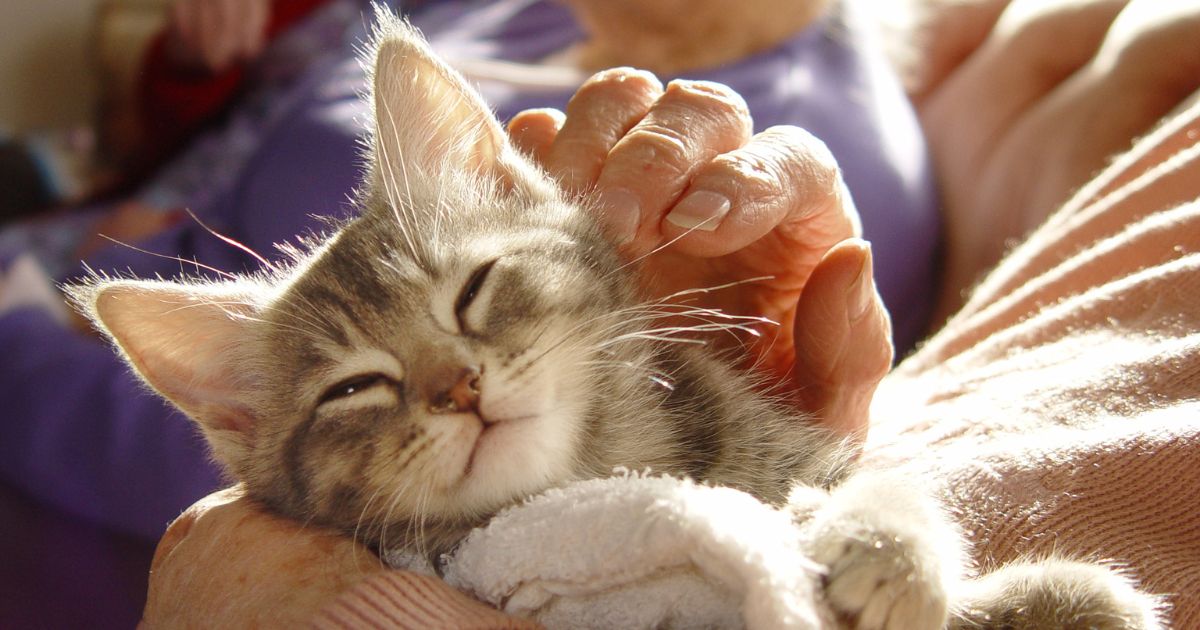
At any age, the connection between people and animals is a very special one, documented for much of our species' development. It should be no surprise then that this special interaction, in the form of pet therapy, can actually provide legitimate benefits to the participant's physical, emotional, and mental well-being.
What Is Pet Therapy?
Most pet therapy is some form of guided interaction between a person and an animal, usually trained. In the majority of cases, it involves the occupational therapists, the animal and the animal's handler, and the patient, with the main exception being in cases in which the patient is the primary caretaker of the pet. This unique therapy approach aims to help the patient recover and learn to cope with their physical and mental health problems.
The vast majority of animals used in pet therapy are cats and dogs, but there are cases of guinea pigs, hamsters, horses, and more exotic animals that can also be used. The type of animal and form of interaction with them is something that depends on the goals of the patient and their therapist in their treatment plan.
The bond between humans and animals is what makes pet therapy work. Common features include sessions where an animal and their handler visit the patient, physical therapy, and occupational therapy sessions with the presence of support animals. Some common pet therapies include visitation therapy, animal-assisted therapy (AAT), animal-assisted activities (AAA), and facility therapy.
The human-animal bond is essential for success. Components of pet therapy include the animal, the handler/owner, and the patient. Pet therapy can be used in a variety of ways, from meet-and-greet sessions to physical therapy, occupational therapy, and distraction. The most common types are visitation, animal-assisted therapy (AAT), and facility therapy.

What/How Can Pet Therapy Help?
Therapeutic treatments that involve contact with animals have been shown to have many benefits for patients in various healthcare settings. A pet therapy program can help patients to cope with stressors such as illness, injury, or other strenuous life events. In addition to decreasing stress, pet therapy has been shown to help some patients decrease their pain, blood pressure, anxiety and depression, fatigue, loneliness, and isolation.
In addition to some of these immediate impacts, pet therapy has been seen to increase patients' overall energy, life satisfaction, and self-esteem. Playing with and walking with animals can also help to improve motor skills, as well as communication and social skills. Patients of pet therapy programs often develop more positive outlooks, and find that they are less bored after participating in pet therapy, particularly with their healthcare providers or family members.
As a result of many of these benefits, studies on pet therapy suggest the reduction of cardiovascular disease and stroke risk. It can also help to calm some overwhelmed patients such as scared children, people with developmental disabilities, and older adults who have dementia episodes. As such, pet therapy can help some of these patients to withstand procedures like MRI, blood testing, and others without anesthetizing the patient.
A review study in the European Journal of Integrative Medicine stated that pet therapies seem to provide benefits for physical and mental health in many cases. The conditions most likely to be helped by animal therapies are those suffering from anxiety and depression.
In addition to helping patients of many backgrounds, pet therapy can be helpful to visiting family and friends as well. Going to hospital visits or checking in on loved ones battling serious disease can be incredibly stressful. Some pet therapies can help visitors to deal with their stress as well as the patient's.
A study on animal therapy in the Clinical Journal of Oncology Nursing even found that the presence of and interaction with pets by healthcare staff members like doctors and nurses improved staff morale and decreased burnout.
Similarly, a study in Psychogeriatrics found that dog-assisted therapy in senior care facilities reduced symptoms of depression. The results suggest that dogs garner positive emotional responses and help to drive social interaction.
These examples of pet therapy being beneficial for the healthcare workers involved should also be taken into account when creating pet therapy programs and plans within healthcare settings.

How Older Adults Can Take Advantage
As discussed previously, pet therapy comes with many benefits for people of various backgrounds and conditions. Some of these benefits are especially positive for elderly patients.
Animals, especially those trained for pet therapy, have a calming presence and are trained to recognize signs of anxiety and fear in people. For older adults who struggle with anxiety or fears, especially in cases of neurological problems such as dementia and Alzheimer's disease, which can be a very scary experience for patients losing track of their memories and current situations.
Pet therapy can also help some patients in recalling memories. A pet therapy plan geared towards improving memory and recall might have patients try to think back upon past experiences with pets, and having patients try to remember information about the particular animal such as their name and breed.
Another significant bonus of pet therapy for older adults is the sheer mental stimulation. Enrichment is important for all living things in any situation, and positive experiences like playing and interacting with animals is very mentally stimulating. Not only that, but as the natural instinct for many around animals is to try to speak with and/or command them, seniors can often learn to communicate with the animals, even non-verbally at times.
A benefit for most pet therapy patients, but especially important at older ages, is the aforementioned decrease in blood pressure, pain from various physical ailments, chronic or otherwise, and the improvement and maintenance of motor skills.
Arguably the greatest benefit of pet therapy for seniors is the decrease in feelings of loneliness. Older adults, especially those who live alone or in a nursing home, oftentimes feel lonely and alienated by their families. Having an animal to interact with can help curb those lonely feelings and keep patients happier.

Common Kinds of Pet Therapy
Ownership Therapy
As the name suggests, ownership therapy is when the patient owns the pet (usually a cat or dog) in cases where the older adult is active and able enough to care for a pet independently, including walks, exercise, paying for vet visits, and grooming.
Animal-Assisted Therapy
Animal-assisted therapy is a very formal and rigid type of pet therapy which can be helpful for older adults in need of extreme treatment. Patients are set up and paired with sensitive animals like horses and dolphins in an attempt to boost nonverbal communication and increase the patients' confidence.
Animal-Assisted Activities
AAA is usually far less formal than AAT. Unlike the strict and rigid structure of AAT, AAA tends to involve general activities in the presence of animals, simply for the sake of comfort and company. This could involve shopping, walking, hiking, and so on.
Visitation Therapy
The more common kind of pet therapy is visitation therapy. This kind of therapy involves handlers or owners visiting patients either at their homes or in a healthcare facility that allows such visits. Visiting animals can comfort both patients and healthcare staff.
Staying Safe Around Animals
There can sometimes be concerns regarding performing animal therapy in healthcare settings like hospitals and nursing rooms. Some of these issues are valid, relating to hygiene, patients' potential phobias of animals, noise, disruption to work and employees, and the spread of infection. Allergic reactions are also a potential risk when bringing animals into an enclosed space.
While these concerns all make sense on the surface, pet therapy has not been shown to come with an increase in incidents of illness and infection. In addition, adequately trained pet therapy animals should not be noisy or disruptive in a healthcare setting.
To further avoid the risk of spreading bacteria or infection, wash hands regularly and use hand sanitizer or wipes after interactions with animals. Try to avoid placing animals directly onto patients' beds as well, as it may be unsanitary. Patients or residents that have fears or allergies regarding the animal in question should receive fair warning and pet therapy should be avoided in their room or facility.
Before an animal is cleared to be used for pet therapy, it should be evaluated for multiple reasons. Physical examinations need to be performed to ensure the animal is disease free especially when working with elderly patients who are immunocompromised. The animal must have completed an obedience training course, as well as a course for the handler to learn how to handle their animals around others.
Ideally, this background on assistive animals should include an evaluation of the animal's temperament and behavior and a certification before it can be used for pet therapy.
Keystone Health
Keystone Health is Idaho's only independent geriatric clinic and the state's leading house call provider since 2013. Keystone provides medical care and house call visits for older patients in the greater Boise area. To learn more about the services available to you and your loved ones, click here.
